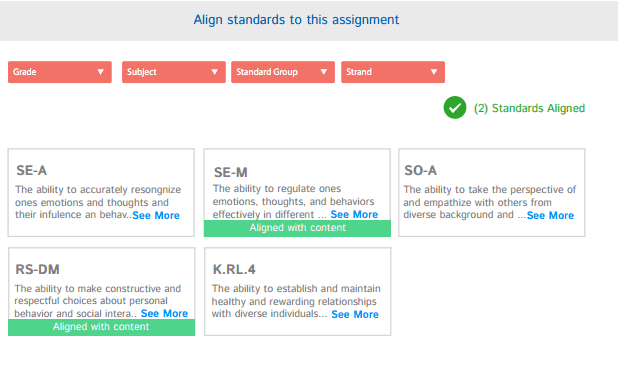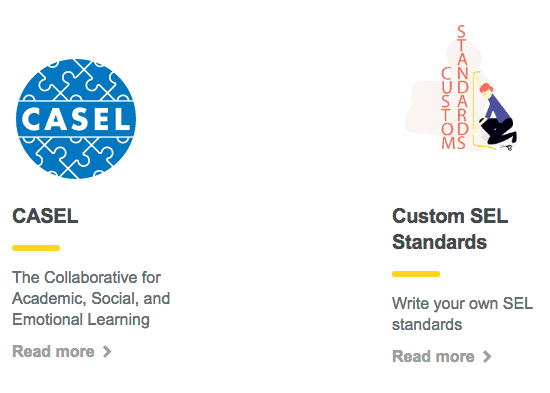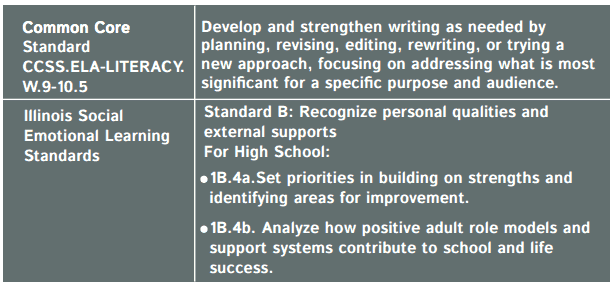Personalized Standards-Based Instruction Tied to Social Emotional Learning

As Tom Vander Ark stated in Personalized Learning in 2016: What’s Working, What’s Missing, “in the seven years since the 2009 iNACOL Symposium–-the event that signaled a new era of blended and personalized learning in U.S. education–-we’ve made a lot of progress.”
He also alludes to the fact that there is still so much more to come in the personalized learning revolution.
Continued progress will mean even more personalized environments where each student is becoming a better learner, team member, contributor and friend to help them thrive in their current situation and surroundings. It also means this will happen in conjunction with helping to prepare students so they are ready to navigate and contribute to our increasingly project-based world.
Students will need opportunities to both grow their academic skills, but also their social and emotional skills. CASEL (Collaborative for Academic, Social, and Emotional Learning) defines Social Emotional Learning (SEL) as, “the process through which children and adults acquire and effectively apply the knowledge, attitudes and skills necessary to understand and manage emotions, set and achieve positive goals, feel and show empathy for others, establish and maintain positive relationships and make responsible decisions.”
The CASEL Competencies and corresponding outcomes are focused on:
- Self-awareness
- Self-management
- Social awareness
- Relationship skills
- Responsible decision-making
Cohesive Academic and Social Emotional Learning
SEL does not have to be separate from academic learning or divorced from the rest of the academic day. SEL can be a part of standards-based instruction. Two shifts this combination requires (SEL and academic skills – both for helping students today and in their futures) are from integrated contexts >> discrete contexts and cohorts >> more personalized.
These shifts are particularly important when thinking about how we can better personalize learning so that there is a focus on both academic and SEL within the same student activity or project.
|
 Kiddom is a free platform teachers (from trigonometry to dance teachers) can use to think about student work from both an academic and SEL lens.
Kiddom is a free platform teachers (from trigonometry to dance teachers) can use to think about student work from both an academic and SEL lens.
Using activities from different sites (such as CK-12, Khan Academy, CommonLit and Edmodo) or teacher-created activities, teachers can integrate and provide students feedback on both SEL competencies and academic standards.
The CASEL SEL competencies are embedded in the program and can be tagged to students work, but teachers can also create and upload their own standards–moving in a direction of more discrete contexts. (See more on CASEL Social Emotional Learning Competencies).

Vander Ark and co-author Mary Ryerse caution about moving too quickly with incorporating SEL assessment into accountability systems. It is important to remember the focus should be on giving high-quality feedback intended to help individual student growth (see page 11 of Getting Smart on Assessing & Measuring Social Emotional Learning).
We ought to be highlighting for students the social and emotional skills they are already using, or could be, when doing work with teammates or in personal pursuits.
A Practical Example
In the example below, students would need to both work on their academic writing, but also demonstrate how they reflected on peer feedback and collaborated with the intended audience to make their writing relevant.
Rather than assigning a score to this work, a teacher or class peer may use the SEL standard as part of his/her feedback, asking the student if they thought about how adults or mentors in their life could help them during the writing process.

From the Kiddom SEL Guide
Connected to the Real-World
If we think about our own projects and collaborative work in teams or PLNs, this is reflective of what we might actually experience: a blend of tactile tasks with social-emotional goals and needs. Feedback about how we work and an honest look at how we are doing–both in terms of our ability to relate socially and emotionally and how we perform specific tasks–is most helpful.
As we progress in the personalized learning revolution, a deeper level of personalized learning seems necessary. Teachers increasingly will be even more intentional, during and after learning experiences, about using information about student interests, social and emotional skills, coursework, academic strengths, culture, background and readiness.
For more, see:
- Personalized Learning in 2016: What’s Working, What’s Missing
- Getting Smart Podcast | Schools Can (and Should) Measure Noncognitive Skills
- 10 Ways Educators Can Use SEL Measurement and Assessment for Student Success
- Can Grit be Grown?
- Social and Emotional Learning and Assessment: The Demand is Clear
Stay in-the-know with all things EdTech and innovations in learning by signing up to receive the weekly Smart Update.




Roz Bahrami
I think this is so important. So much in regards to how we learn is the way in which we learn. You hear so many stories about students wanting to learn and be involved when they have a teacher who is invested in them socially and emotionally. Great post!
Replies
Emily Liebtag
Glad you found it helpful!